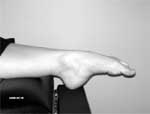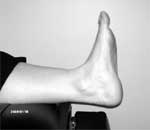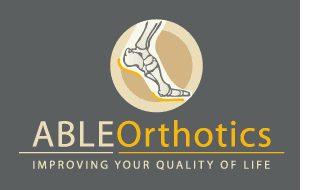Plantar Fasciitis: What You Need to Know
Posted by: ABLE Orthotics on April 21, 2010
What is it?
Fascia is a tough tissue (connective tissue) found throughout our body, offering support to our body’s structure. The plantar fascia is the band of fascia that spans the bottom of the foot. It originates at the heel, extends through the arch and attaches at the toes. Plantar fasciitis is the painful condition that results when the plantar fascia becomes torn, inflamed, or irritated due to sudden trauma or repeated stress.
Plantar fasciitis is particularly common in:
- runners
- people who are overweight
- pregnant women
- people who wear shoes with inadequate support
Symptoms:
Symptoms can vary from one person to another, but most often, plantar fasciitis begins as a dull ache under the heel, and possibly in the arch. It can become a sharp pain with the first steps out of bed in the morning, or after any period of sitting or rest. The pain often lessens after a period of walking, but can recur throughout the day with prolonged or vigorous activity.
Treatment:
Numerous treatment options exist, and a thorough assessment can help determine what treatment, or series of treatments, may be necessary to reduce the aggravating stress and allow the injured fascia to heal.
Here are a few things that you can do on your own that may provide relief:
- If you have stiffness or pain first thing in the morning, a few simple stretching exercises to “wake up” your feet before you get out of bed may be helpful (see below for description). Other exercises may be helpful, but an assessment by a Pedorthist or Physiotherapist would be required to know if they are appropriate for you.
- Wear appropriate, supportive footwear. Ask your Pedorthist if you are not sure what is appropriate for your foot type.
- Replace old and worn out footwear – if shoes that you wear 80% of the time are more than one year old, replace them
- Avoid barefoot walking completely until condition resolves – wear a pair of supportive shoes around the house, and keep them by your bed to wear when you first get up
- Daily contrast foot baths (total 20 minutes), alternating warm and cold water.
- Apply ice for 10 minutes after activity or at the end of the day to relieve pain and reduce inflammation
If your symptoms are not improving, please book a follow up appointment with your family doctor to see if a referral to a Pedorthist is appropriate. If you are already under the care of a Pedorthist, set up an appointment to see how they can maximize results.
Not all individuals will achieve complete pain relief with the treatment described above. In some cases, dealing with plantar fasciitis may require other treatment to reduce pain and/or control foot mechanics. These treatment options may include:
- Foot orthoses
- Physiotherapy
- Acupuncture
- Massage therapy
- Dorsiflexion night splint
- Anti-inflammatory medication (as prescribed by your physician)
- Cortisone injections, in extreme cases only (as prescribed by your physician)
Stretching Exercises
Perform the following stretches in a pain-free range of movement. This means stretch only to the point of tension, never into pain. Try to do these stretches before getting out of bed and before standing after periods of sitting or rest.
Ankle Rotations:
- Lie (or sit) with leg outstretched
- Make slow controlled circles with your foot / heel – 10 clockwise and 10 counter-clockwise.
- Draw the alphabet with the foot
Calf Stretches:
- While seated or lying down, have leg outstretched and knee straight
- Alternate between gently pointing your toes away from you and then flexing your ankle to pull your toes toward your shins.



